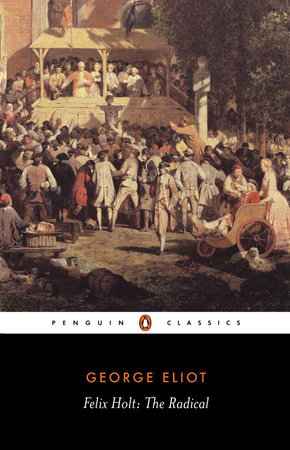MARY ANN EVANS was born on November 22, 1819, at Chilvers Coton, Warwickshire, England. After her father’s death she settled in London and from 1851 to 1854 she served as a writer and editor of the Westminster Review, the organ of the Radical party. In London she met she met George Henry Lewes, a journalist and advanced thinker. Lewes was separated from his wife, who had had two sons by another man, but had been unable to obtain a divorce. In a step daring for Victorian times, Mary Ann Evans began living openly with Lewes in 1854, in a union they both considered as sacred as a legal marriage and one that lasted until his death in 1878.
With Lewes’s encouragement, Mary Ann Evans wrote her first fictional work, “The Sad Fortunes of the Reverend Amos Barton,” for Blackwood’s Magazine in 1857; it was followed by two more stories published under the pseudonym George Elliot—“George” because it was Lewes’s name and “Eliot” because, she said, it was “a good mouth-filling, easily pronounced word.” At the age of thirty-nine she used her memories of Warwickshire to write her first long novel,
Adam Bede (1859), a book that established her as the foremost woman novelist in her day. Then came
The Mill on the Floss (1860),
Silas Marner (1861), and
Romola (1863). Her masterpiece and one of the greatest English novels,
Middlemarch, was published in 1871–72. Her last work was
Daniel Deronda (1876). Before her death in 1880, she had been recognized by her contemporaries as the greatest living writer of English fiction.
More by George Eliot


